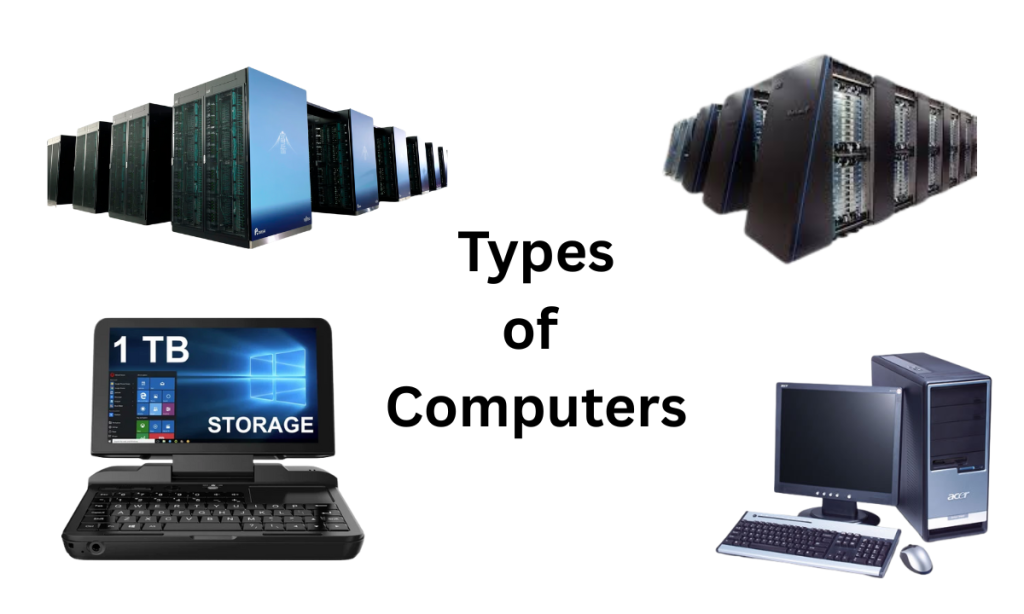Computers are divided into different types based on their size, power, cost, and purpose. Some computers are very large and powerful, while others are small and made for daily use.
Let’s understand the types of computers with examples and uses.
1. Supercomputer
Definition
Supercomputers are the fastest and most powerful computers in the world. They can solve very complex problems in just seconds.
Features
- Can perform billions of calculations per second.
- Used for scientific and technical tasks.
- Very expensive and takes up a lot of space.
Uses
- Weather forecasting
- Space research (e.g., NASA)
- Nuclear simulations
- Medical research
Example
Fugaku (Japan) or Summit (USA) – both are supercomputers used for global scientific work.

2. Mainframe Computer
Definition
Mainframe computers are large and powerful systems used by big organizations to store and process huge amounts of data.
Features
- Can support hundreds or thousands of users at once.
- Excellent for handling large databases and transactions.
- More reliable and secure.
Uses
- Banks
- Government departments
- Airlines
- Insurance companies
Example
A bank like HBL uses a mainframe to manage all customer accounts across Pakistan.
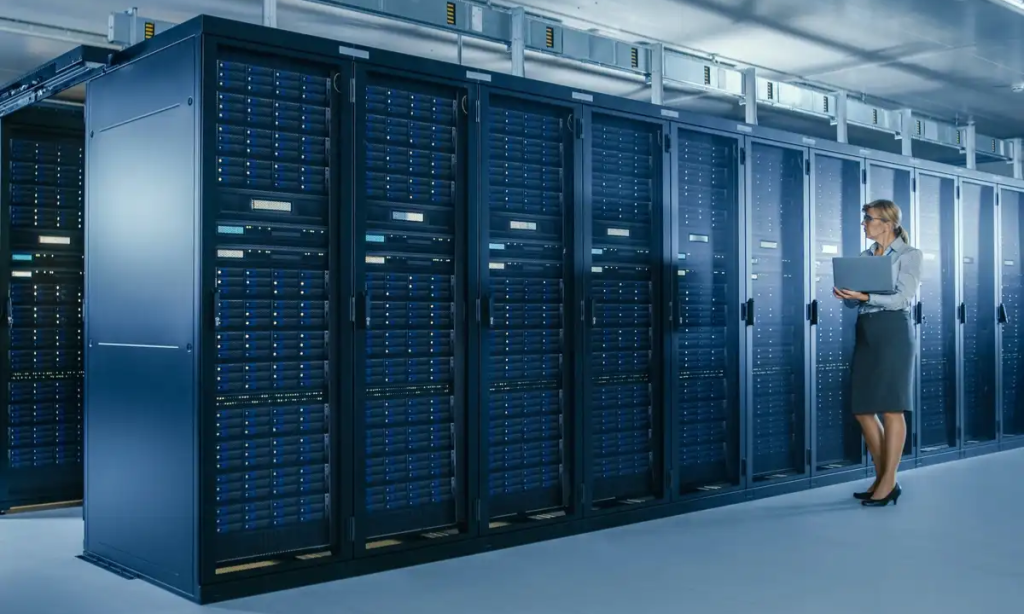
3. Mini Computer
Definition:
Minicomputers are smaller than mainframes, but still capable of supporting multiple users at the same time.
Features:
- Less powerful than mainframes.
- Used in medium-sized organizations.
- Can connect multiple terminals.
Uses:
- University database systems
- Small factories
- Laboratory equipment
Note:
Today, minicomputers are rare and have mostly been replaced by modern servers and powerful personal computers.
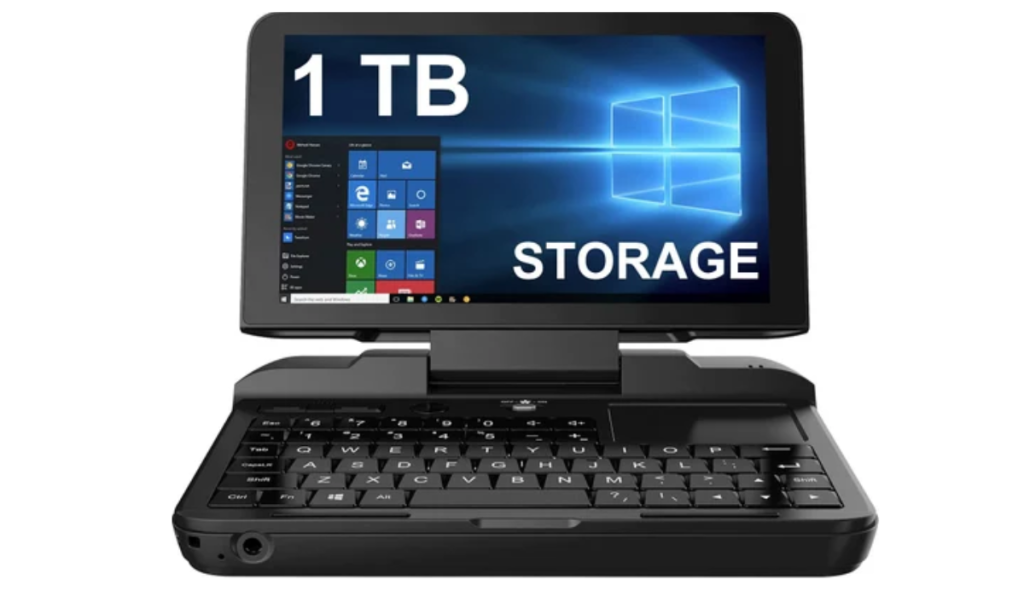
4. Microcomputer (Personal Computer / PC)
Definition:
Microcomputers are the most common type of computers, designed for individual use.
Features:
- Small in size.
- Meant for one user at a time.
- Used at home, school, or office.
Uses:
- Typing documents
- Playing games
- Watching movies
- Internet browsing
- Learning and research
Example:
A desktop computer in a school’s computer lab.
Types of Microcomputers
- Desktop PC
- Workstation
- Laptop (also a microcomputer)
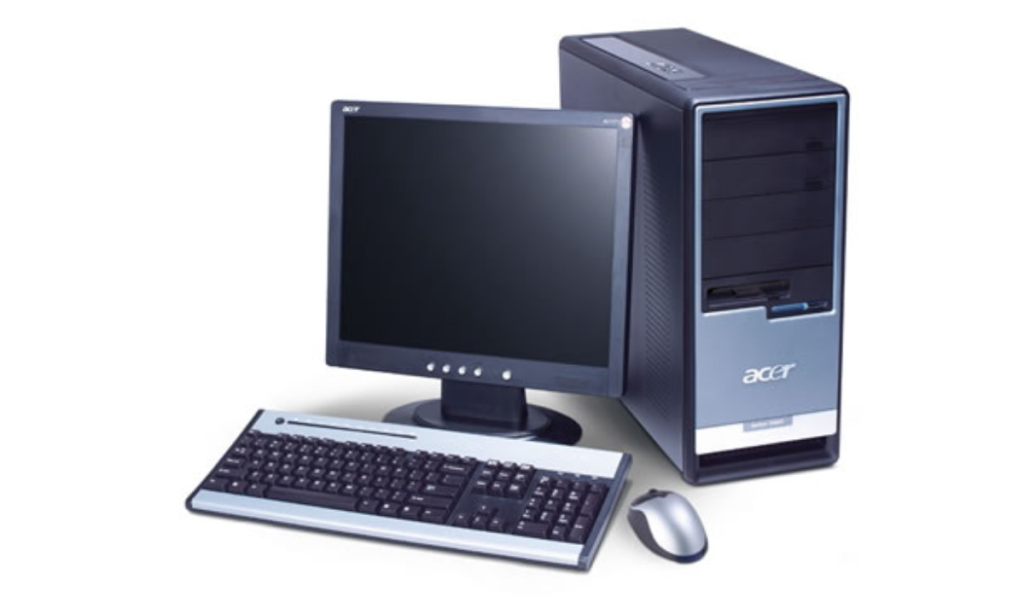
5. Laptop
Definition:
A portable microcomputer that can be carried easily. It has a built-in screen, keyboard, battery, and touchpad.
Features:
- Compact and lightweight.
- Works on battery.
- Performs all the basic functions of a desktop.
Uses:
- Online classes
- Office work
- Traveling professionals
- University students
Example:
A student using a Dell or HP laptop for assignments and Zoom classes.
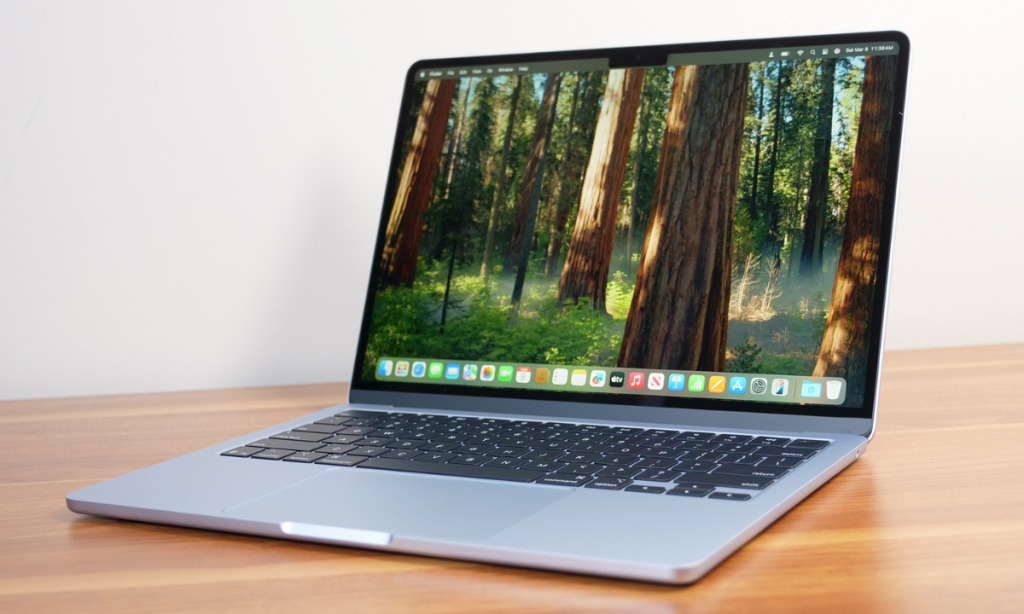
6. Tablet and Smartphone
Definition:
These are small-sized computers with touchscreen interfaces. They are used mostly for communication, internet, and entertainment.
Features:
- No keyboard or mouse (touchscreen-based).
- Run on battery and are very lightweight.
- Thousands of apps available.
Uses:
- WhatsApp, Zoom, YouTube
- Social media (Instagram, Facebook)
- Taking notes, reading e-books
Examples:
- Smartphone: Samsung Galaxy, iPhone
- Tablet: iPad, Samsung Tab
Comparison:
- Smartphone = Smaller, fits in pocket
- Tablet = Bigger screen, used for reading or drawing
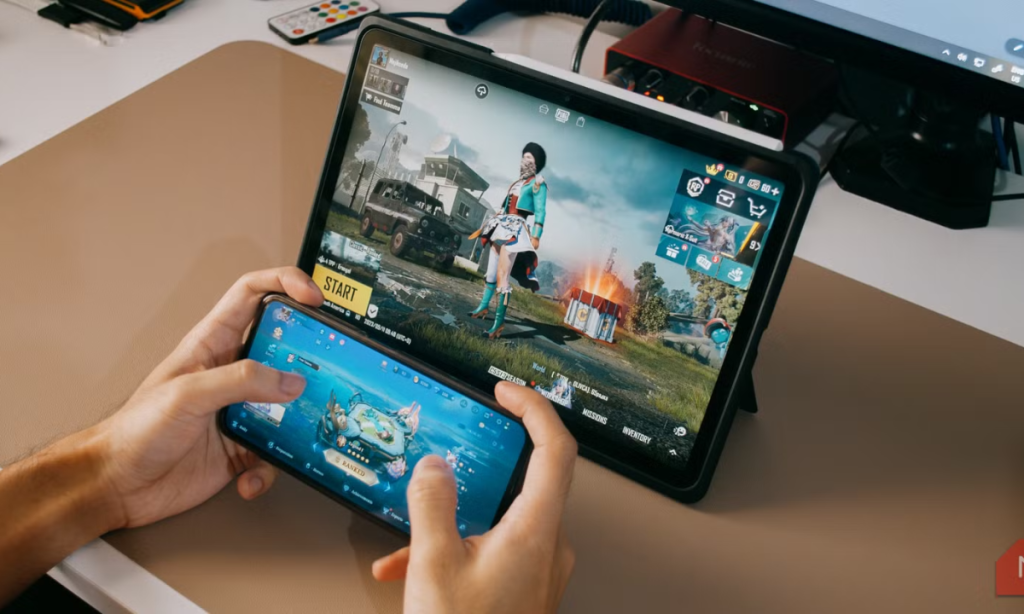
7. Embedded Computer
Definition:
An embedded computer is a tiny computer system that is built inside another machine. It is programmed to do only one specific task.
Features:
- Not used for general tasks like typing or browsing.
- Cannot be reprogrammed easily.
- Works automatically.
Uses:
- Washing machines
- Cars (brake system, GPS)
- ATMs
- Microwave ovens
- Smart TVs
Example:
A car’s automatic gear system is controlled by an embedded computer.
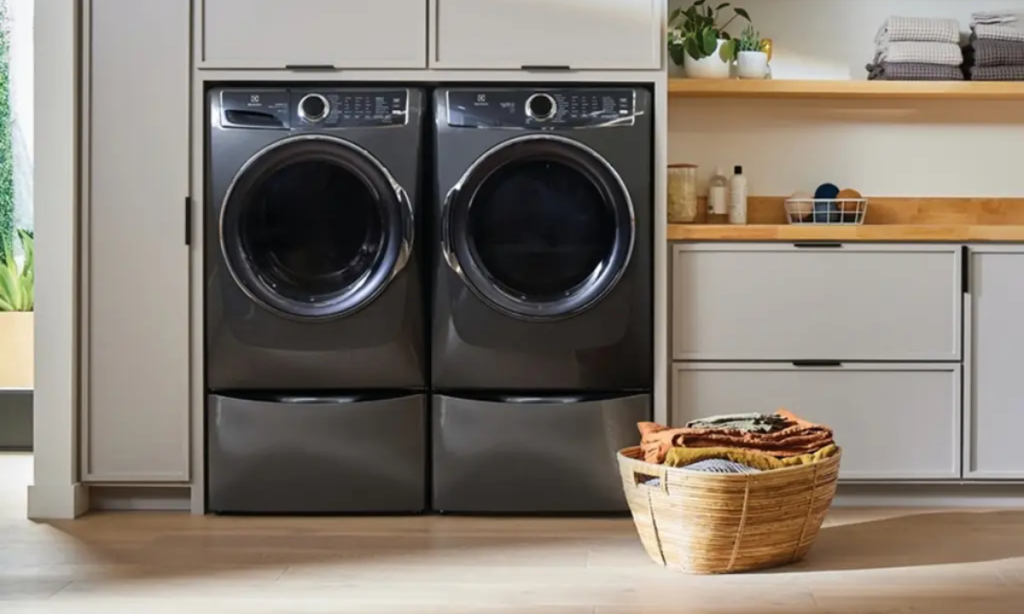
Comparison Table: Types of Computers
| Type of Computer | Size | Users Supported | Use Case | Portable |
|---|---|---|---|---|
| Supercomputer | Very Large | Thousands | Scientific research, weather analysis | ❌ No |
| Mainframe | Large | Hundreds | Banks, government, large data systems | ❌ No |
| Mini Computer | Medium | Dozens | Medium businesses, small labs | ❌ No |
| Microcomputer (PC) | Small | One | Office, school, personal use | ❌ No |
| Laptop | Small | One | Students, remote workers | ✅ Yes |
| Tablet / Smartphone | Very Small | One | Communication, media, mobile apps | ✅ Yes |
| Embedded Computer | Very Small | One (Fixed Task) | Used inside machines | ❌ No |
Conclusion
There are different types of computers for different needs. From powerful supercomputers used in science to tiny embedded computers in machines, each type plays a unique role.
Why is this important?
Understanding the types of computers helps us choose the right one for our needs—whether for education, business, or entertainment.

